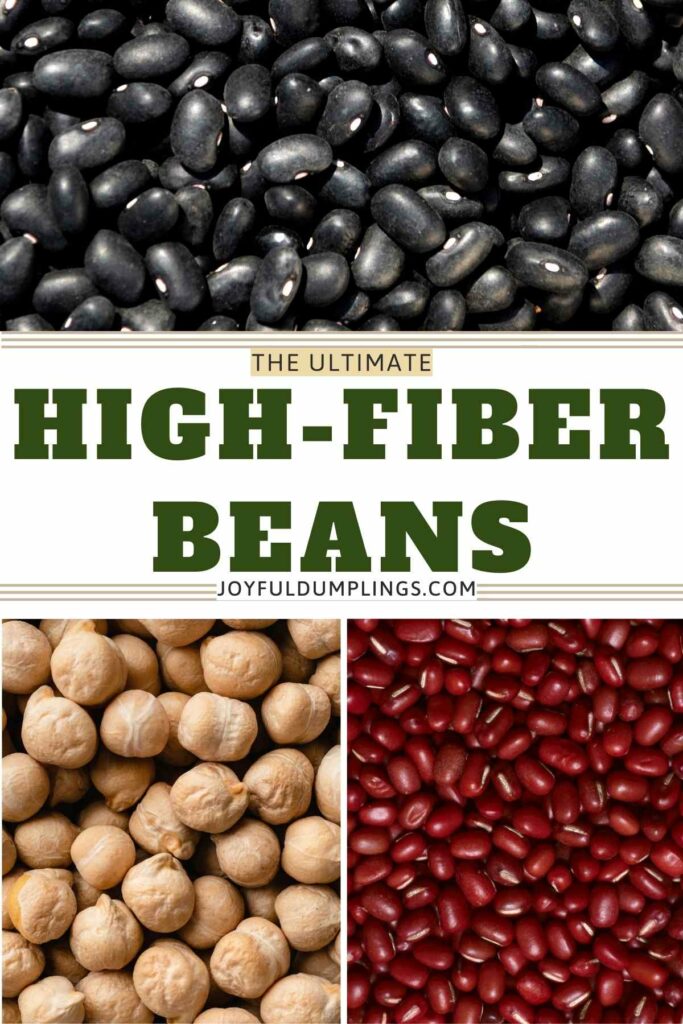Eat Well, Live Better: The Undeniable Link Between Food and Overall Wellness
We are, in essence, walking, talking manifestations of what we consume. From the first gulp of morning coffee to the last bite of an evening meal, food weaves itself into the very fabric of our existence, dictating not just our physical form but also the intricate dance of our thoughts, emotions, and overall vitality. It is a story as old as humanity itself – the quest for sustenance, the joy of a shared meal, the understanding, often intuitive, that what we put into our bodies profoundly shapes our journey through life. Yet, in our modern, fast-paced world, this fundamental truth often gets lost amidst a cacophony of conflicting dietary advice, the allure of convenience, and the relentless marketing of processed pleasures.
This is not merely a discourse on diet trends or a rigid set of rules; it is an exploration, a narrative journey into the undeniable, intricate, and often overlooked link between what graces our plates and the quality of the life we live. It’s a story that begins at the cellular level, whispers through the pathways of our minds, echoes in the resilience of our immune systems, and ultimately culminates in our capacity to thrive, not just survive. For the knowledgeable audience, aware that wellness extends far beyond the absence of disease, this narrative seeks to deepen the understanding that food is not merely fuel, but a powerful, transformative tool for holistic well-being.
I. The Physical Foundation: Fueling the Body’s Machinery with Precision
Imagine the human body as an exquisitely complex, self-repairing, self-regulating machine, far more sophisticated than any human-made device. Every breath, every heartbeat, every thought, every movement requires energy and raw materials. Food is the primary source of both. But just as a high-performance vehicle requires premium fuel and regular maintenance, our bodies demand a diverse array of nutrients, delivered consistently and in the right balance, to function optimally.
A. Macronutrients: The Grand Architects of Energy and Structure
The bedrock of our physical existence is built upon macronutrients: carbohydrates, proteins, and fats. These are the "big three," required in larger quantities, each playing distinct, indispensable roles.
-
Carbohydrates: The Primary Energy Source (and More). Often maligned in contemporary diet culture, carbohydrates are, in fact, the body’s preferred and most efficient source of energy. They are broken down into glucose, the fuel that powers every cell, especially our brains. The story here isn’t about avoiding carbs, but understanding their quality. Complex carbohydrates, found in whole grains, fruits, vegetables, and legumes, are like slow-burning logs in a fireplace. They release glucose gradually, providing sustained energy, fiber for digestive health, and a wealth of vitamins and minerals. Refined carbohydrates, conversely, are akin to kindling – they burn fast, causing rapid blood sugar spikes followed by inevitable crashes, impacting energy, mood, and long-term metabolic health. The difference between a bowl of steel-cut oats and a sugary donut isn’t just calories; it’s a profound divergence in how the body receives and utilizes its energy.
-
Proteins: The Master Builders and Regulators. Proteins are the body’s structural engineers and operational managers. Composed of amino acids, they are fundamental for building and repairing tissues – from muscles and skin to hair and nails. Beyond structure, proteins form enzymes that facilitate countless biochemical reactions, produce hormones that regulate virtually every bodily function, and construct antibodies crucial for our immune system. Imagine a construction site where the workers are the amino acids, and proteins are the various teams building and maintaining everything. A diet lacking in adequate, diverse protein sources can lead to muscle wasting, weakened immunity, sluggish metabolism, and a general decline in the body’s ability to repair and rejuvenate itself. Quality sources range from lean meats, fish, eggs, and dairy to legumes, nuts, seeds, and plant-based protein powders.
-
Fats: Essential for Life, Not Just Lipids. For decades, fats were demonized, leading to a surge in low-fat, high-sugar processed foods that ironically exacerbated many health issues. The narrative has rightly shifted: fats are absolutely essential for human health. They are vital components of cell membranes, providing structure and flexibility. They are crucial for the absorption of fat-soluble vitamins (A, D, E, K). They insulate our organs, regulate body temperature, and are indispensable for hormone production. Perhaps most critically, healthy fats, particularly Omega-3 fatty acids, are fundamental for brain health, cognitive function, and reducing systemic inflammation. The distinction, however, is paramount: monounsaturated and polyunsaturated fats (found in avocados, nuts, seeds, olive oil, fatty fish) are the heroes, while trans fats and excessive saturated fats are the villains, contributing to heart disease and inflammation.
B. Micronutrients: The Unsung Heroes and Catalysts
While macronutrients provide the bulk of energy and structure, micronutrients – vitamins and minerals – are the silent orchestrators, the tiny cogs and lubricants that enable all the grand machinery to run smoothly. Though required in minute quantities, their absence can lead to devastating consequences.
-
Vitamins: The Vital Regulators. From Vitamin C’s role in immune function and collagen synthesis to the B-complex vitamins’ involvement in energy metabolism and neurological health, and Vitamin D’s critical impact on bone health and immunity, each vitamin plays a unique, irreplaceable role. Imagine a complex chemical reaction: vitamins are the catalysts, enabling reactions to occur efficiently. Deficiencies, often subtle at first, can manifest as fatigue, impaired immunity, poor skin health, and even severe neurological or developmental issues.
-
Minerals: The Body’s Essential Elements. Calcium for strong bones, iron for oxygen transport, magnesium for muscle and nerve function, zinc for immune health, potassium for fluid balance – the list is extensive. These minerals are literally the elements that compose our bodies and facilitate electrical impulses, enzyme activity, and countless metabolic processes. A diet rich in whole, unprocessed foods naturally provides a spectrum of these vital minerals, highlighting the importance of diversity in our food choices.
-
Antioxidants: The Body’s Defense Shield. Beyond individual vitamins and minerals, a vast array of plant compounds known as phytochemicals act as powerful antioxidants. Found abundantly in fruits, vegetables, herbs, and spices, these compounds combat oxidative stress – the damage caused by free radicals – which is implicated in aging and chronic diseases like cancer, heart disease, and neurodegenerative disorders. They are the body’s natural defense force, tirelessly protecting cells from damage.
C. Hydration: The Elixir of Life
Often overlooked in discussions about food, water is arguably the single most critical nutrient. Our bodies are composed of approximately 60% water, and it participates in virtually every physiological process. It transports nutrients to cells and waste products away, lubricates joints, regulates body temperature, aids in digestion, and maintains the structural integrity of cells. Dehydration, even mild, can impair cognitive function, reduce physical performance, cause headaches, and significantly strain our internal systems. It’s the silent workhorse, making everything else possible.
D. Gut Health: The Second Brain and Immune Hub
Perhaps one of the most revolutionary discoveries in recent nutritional science is the profound impact of the gut microbiome. Billions of bacteria, fungi, and other microorganisms reside in our digestive tracts, forming a complex ecosystem that is intimately linked to our overall health. A healthy, diverse microbiome aids in digestion and nutrient absorption, synthesizes certain vitamins, trains our immune system, and even influences our mood and brain function through the "gut-brain axis." Foods rich in fiber (prebiotics) feed beneficial bacteria, while fermented foods (probiotics) introduce beneficial strains. Conversely, diets high in sugar, processed foods, and antibiotics can disrupt this delicate balance, leading to inflammation, digestive issues, weakened immunity, and even contributing to mental health disorders. The story of wellness increasingly begins in the gut.
II. Beyond the Physical: The Mental and Emotional Landscape
The connection between food and well-being extends far beyond the physical realm, permeating the very core of our mental and emotional states. The idea that "you are what you eat" takes on a deeper, more profound meaning when we consider its influence on our thoughts, feelings, and cognitive abilities.
A. Food and Mood: The Neurotransmitter Connection
Our brains, the command centers of our bodies, are exquisitely sensitive to the nutrients we consume. Neurotransmitters – the chemical messengers that regulate mood, sleep, appetite, and pleasure – are directly influenced by our diet.
-
Serotonin, Dopamine, and GABA: Many neurotransmitters, like serotonin (often associated with feelings of well-being and happiness), are synthesized from amino acids found in protein-rich foods. Tryptophan, for instance, is a precursor to serotonin. A diet rich in diverse proteins, healthy fats, and complex carbohydrates provides the necessary building blocks for balanced neurotransmitter production. Conversely, diets high in refined sugars and unhealthy fats can lead to chronic inflammation in the brain, impairing neurotransmitter function and contributing to symptoms of depression and anxiety.
-
Omega-3s and Brain Health: The essential fatty acids, particularly EPA and DHA found in fatty fish, flaxseeds, and walnuts, are critical components of brain cell membranes. They play a vital role in reducing inflammation, improving neuronal communication, and have been linked to a reduced risk of depression, anxiety, and other mood disorders. They are, quite literally, brain food.
-
Blood Sugar Regulation: The rollercoaster of blood sugar spikes and crashes, often induced by refined carbohydrates and sugary drinks, profoundly impacts mood and energy. These fluctuations can lead to irritability, anxiety, difficulty concentrating, and fatigue. Sustained release of glucose from complex carbohydrates, balanced with protein and healthy fats, provides stable energy and a more even keel emotionally.
B. Cognitive Function and Brain Longevity
What we eat today can directly impact our ability to think clearly, remember effectively, and maintain cognitive sharpness well into old age. The brain, despite comprising only 2% of our body weight, consumes a disproportionate amount of our energy and nutrients.
-
Memory and Focus: Foods rich in antioxidants, such as berries, leafy greens, and dark chocolate, protect brain cells from oxidative damage, preserving cognitive function. B vitamins (especially B6, B9, B12) are crucial for nerve health and neurotransmitter synthesis, directly impacting memory and focus.
-
Preventing Cognitive Decline: Chronic inflammation and oxidative stress are key contributors to age-related cognitive decline and neurodegenerative diseases like Alzheimer’s and Parkinson’s. An anti-inflammatory diet, abundant in fruits, vegetables, whole grains, and healthy fats, is a powerful protective strategy. Conversely, diets high in saturated and trans fats, processed foods, and sugar contribute to brain inflammation, accelerating cognitive aging. The concept of the "Mediterranean diet" often highlights foods beneficial for brain health due to its emphasis on these protective elements.
C. Emotional Eating and Psychological Well-being
Food is inextricably linked to our emotions, serving as a source of comfort, celebration, and even self-punishment. Understanding this psychological dimension is crucial for holistic wellness.
-
The Comfort Food Paradox: In times of stress or sadness, many turn to "comfort foods" – often high in sugar, fat, and salt. While these foods can provide a momentary sense of pleasure by triggering dopamine release, this effect is fleeting. In the long term, regular consumption of such foods can lead to energy crashes, guilt, and further exacerbate negative emotional states, creating a vicious cycle. The story here is about distinguishing between genuine hunger and emotional hunger, and developing healthier coping mechanisms.
-
Mindfulness in Eating: Cultivating mindfulness around food – paying attention to hunger and fullness cues, savoring flavors, and eating without distraction – can transform our relationship with food. It moves us away from mindless consumption and towards intentional nourishment, fostering a sense of control and self-respect.
-
The Social and Cultural Aspects of Food: Food is deeply embedded in our social fabric. Shared meals build community, celebrate milestones, and transmit cultural heritage. Depriving ourselves or feeling anxious about food can isolate us. A healthy relationship with food allows for flexibility, enjoyment, and participation in these vital social rituals without guilt or fear. It’s a story of balance, where food nourishes not just the body, but also the soul and our connections to others.
III. The Disease Prevention and Management Narrative
Perhaps the most compelling chapter in the story of food and wellness is its profound influence on our susceptibility to, and management of, chronic diseases. For centuries, traditional medicines instinctively understood this link; modern science now provides irrefutable evidence.
A. Chronic Diseases: A Dietary Link
The rise of non-communicable chronic diseases in the developed world parallels a dramatic shift in dietary patterns – away from whole, unprocessed foods and towards industrialized, refined, and often nutrient-poor options.
-
Heart Disease: The leading cause of death globally, heart disease is heavily influenced by diet. Excessive intake of saturated and trans fats, high sodium levels, and refined sugars contribute to high cholesterol, high blood pressure, and inflammation – key risk factors. Conversely, diets rich in fiber, healthy unsaturated fats, fruits, vegetables, and whole grains significantly lower these risks, promoting arterial health and reducing the burden on the cardiovascular system.
-
Type 2 Diabetes: Characterized by insulin resistance and high blood sugar, Type 2 diabetes is almost epidemic in many societies. Diets high in refined carbohydrates and sugars overwhelm the body’s insulin response, leading to its development. A diet emphasizing whole grains, lean proteins, healthy fats, and abundant non-starchy vegetables can prevent its onset and effectively manage it once diagnosed, often reducing the need for medication.
-
Cancer: While multifactorial, diet plays a significant role in cancer prevention and progression. Processed meats, excessive alcohol, and diets low in fruits and vegetables are associated with increased risk. Antioxidants and phytochemicals found in plant foods offer powerful protective effects, neutralizing carcinogens and inhibiting cancer cell growth. The story of cancer prevention is, in part, a story of eating the rainbow.
-
Autoimmune Diseases: A growing body of research suggests a strong link between gut health, inflammation, and the development of autoimmune conditions (e.g., rheumatoid arthritis, Crohn’s disease, celiac disease). Dietary choices that promote gut integrity and reduce systemic inflammation are crucial for managing and potentially preventing these complex conditions.
B. Inflammation: The Root of Many Evils
Chronic, low-grade inflammation is now recognized as a common thread underlying nearly all chronic diseases. It’s the body’s immune system in a constant state of alert, slowly damaging tissues and organs. Diet is a primary driver of this inflammatory state.
- Pro-inflammatory vs. Anti-inflammatory Foods: Diets high in processed sugars, refined grains, unhealthy fats (especially trans fats and some vegetable oils high in Omega-6s), and processed meats tend to be pro-inflammatory. Conversely, diets rich in Omega-3 fatty acids, fruits, vegetables, whole grains, nuts, and seeds are powerfully anti-inflammatory, helping to quell this damaging internal fire. The choices we make at every meal have a cumulative effect on our body’s inflammatory status.
C. Longevity and Quality of Life
The ultimate aspiration of wellness is not merely to extend life, but to enhance its quality, to live vibrantly and independently for as long as possible. The story of longevity is inextricably linked to food.
- Blue Zones: A compelling testament to food’s power comes from the "Blue Zones" – regions of the world where people live measurably longer, healthier lives, often reaching age 100 with remarkable vitality. While genetics play a part, their shared lifestyle patterns, particularly their diets, are striking. They emphasize plant-based whole foods, legumes, healthy fats, moderate caloric intake, and often, a strong sense of community and purpose. Their dietary wisdom underscores that consistent, wholesome eating over a lifetime yields profound dividends in health span. It’s a testament that food isn’t just about preventing illness, but actively promoting a vigorous, fulfilling old age.
IV. The Modern Predicament: Challenges and Choices in a Complex World
Despite the overwhelming evidence linking food to wellness, navigating the contemporary food landscape is fraught with challenges. We live in an era of unprecedented food abundance, yet paradoxically, also widespread nutrient deficiency and diet-related illness.
A. The Food Environment: A Double-Edged Sword
The modern food system is a marvel of efficiency and innovation, yet it has also created an environment that often undermines healthy choices.
- Abundance vs. Nutrient Density: We have more food available than ever before, but much of it is ultra-processed, calorie-dense yet nutrient-poor. These foods are engineered for maximum palatability and addiction, often at the expense of our health.
- Marketing and Convenience Culture: Billions are spent annually to market unhealthy foods, making them seem desirable, convenient, and even essential. The pressure of busy lives pushes us towards ready-made, often less healthy, options.
- Food Deserts and Access Issues: For many, particularly in lower-income areas, access to fresh, affordable, nutritious food is limited, creating "food deserts" where only convenience stores and fast-food chains thrive. This systemic inequality exacerbates health disparities.
B. Dietary Confusion and Information Overload
Never before have we had so much information at our fingertips, yet never before has there been such widespread confusion about what constitutes a healthy diet.
- Fad Diets and Conflicting Advice: From keto to vegan, paleo to intermittent fasting, the landscape of dietary advice is a dizzying array of often contradictory claims. Each trend promises quick results, yet few address the fundamental principles of sustainable, holistic nutrition. This constant flux can lead to diet fatigue, yo-yo dieting, and a sense of failure.
- Social Media Influence: Unqualified "influencers" often propagate misinformation, driven by commercial interests or personal bias, further muddying the waters and making it difficult for individuals to discern evidence-based advice from fleeting trends.
- The Loss of Intuition: In this climate, many have lost touch with their innate hunger and satiety cues, relying instead on external rules or calorie counting, further alienating them from their bodies’ wisdom.
C. The Personal Journey: Making Informed Choices
Amidst these challenges, the story of wellness becomes a personal quest for knowledge, discernment, and empowerment. It’s about shifting from a mindset of deprivation to one of profound nourishment.
- Understanding Bio-individuality: What works for one person may not work for another. Our genetic makeup, lifestyle, activity levels, gut microbiome, and health conditions all influence our optimal dietary needs. This realization moves us beyond one-size-fits-all diets towards personalized, sustainable approaches.
- Sustainable Eating Habits: True wellness isn’t about short-term fixes but about cultivating habits that can be maintained for a lifetime. This means finding enjoyable ways to incorporate whole, nourishing foods into our daily lives, rather than resorting to restrictive regimes.
V. Crafting Your Wellness Plate: Practical Steps and a Mindset Shift
The story culminates in action – how we translate this understanding into daily choices that foster well-being. This isn’t about perfection, but about consistent, intentional effort and a fundamental shift in our relationship with food.
A. Principles of Healthy Eating: A Framework, Not a Formula
Instead of rigid rules, consider these guiding principles for crafting a wellness-focused plate:
- Prioritize Whole, Unprocessed Foods: This is the golden rule. Focus on fruits, vegetables, whole grains, legumes, lean proteins, nuts, and seeds. These foods come with their full complement of nutrients, fiber, and phytochemicals, as nature intended.
- Embrace Variety and Color: Eat a rainbow of produce. Different colors often indicate different antioxidants and nutrients. Variety ensures a broad spectrum of micronutrients and supports a diverse gut microbiome.
- Mindful Eating Practices: Slow down. Pay attention to your food – its smell, taste, texture. Listen to your body’s hunger and fullness cues. Eat without distraction. This simple practice can transform digestion, enhance satisfaction, and prevent overeating.
- Cook at Home More Often: Preparing your own meals gives you control over ingredients, portion sizes, and cooking methods, allowing you to prioritize fresh, whole foods and avoid hidden sugars, unhealthy fats, and excessive sodium found in restaurant and processed foods.
- Hydrate Adequately: Make water your primary beverage. Keep a water bottle handy and sip throughout the day.
- Focus on Fiber: Abundant in plant foods, fiber is crucial for digestive health, blood sugar regulation, and satiety.
B. Beyond the Plate: Lifestyle Integration
Food is a cornerstone, but it is not the only pillar of wellness. True well-being emerges from a synergistic integration of healthy habits.
- Exercise: Regular physical activity complements a healthy diet by improving metabolism, boosting mood, strengthening bones and muscles, and enhancing cardiovascular health.
- Sleep: Adequate, quality sleep is non-negotiable for repair, hormone regulation, and cognitive function. Poor sleep can disrupt appetite hormones, leading to increased cravings for unhealthy foods.
- Stress Management: Chronic stress impacts digestion, inflammation, and can drive emotional eating. Practices like meditation, yoga, spending time in nature, or engaging in hobbies are crucial for mitigating its effects.
- Social Connection: As mentioned, shared meals are vital. Nurturing relationships and fostering a sense of community are powerful determinants of mental and emotional well-being.
C. The Journey, Not a Destination
The pursuit of wellness through food is not a one-time event or a destination to be reached; it is an ongoing journey of learning, adapting, and self-compassion.
- Progress Over Perfection: There will be days when choices aren’t optimal. The key is not to dwell on perceived failures but to return to healthy habits with renewed intention. Forgiveness and resilience are essential.
- Cultivating a Positive Relationship with Food: Move away from viewing food as an enemy or a source of guilt. Instead, see it as a powerful ally, a source of nourishment, pleasure, and vitality. This positive mindset is fundamental to sustainable change.
- Embrace Curiosity: Experiment with new foods, recipes, and cooking techniques. Learn about where your food comes from. The more engaged and curious you are, the more enjoyable and sustainable the journey becomes.
VI. Conclusion: Eating Well to Live Fully
The story of "Eat Well, Live Better" is ultimately a narrative of empowerment. It unveils the profound truth that our daily choices at the dinner table are far more significant than we often realize. Food is not just sustenance; it is information, medicine, pleasure, and connection. It is the language our bodies speak, communicating needs and responding to care.
By understanding the intricate dance of macronutrients and micronutrients, the delicate ecosystem of our gut, the profound connection between our plate and our mood, and the undeniable role of diet in disease prevention, we are equipped to rewrite our own health narratives. We move from being passive recipients of our circumstances to active architects of our well-being.
The journey toward optimal wellness through food is a continuous exploration, a daily commitment to nurturing the incredible machine that is our body and the complex landscape that is our mind. It asks us to slow down, to listen, to choose wisely, and to honor the fundamental link that binds what we eat to how we live. To eat well is not a sacrifice; it is an investment – an investment in energy, clarity, resilience, joy, and the vibrant, fulfilling life we are all capable of living. It is, quite simply, choosing to live better.







